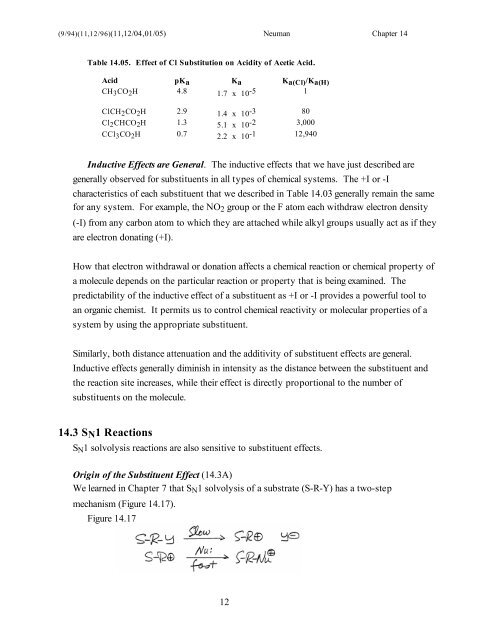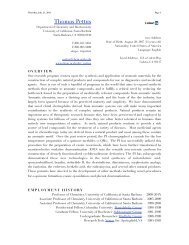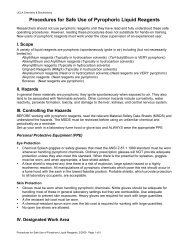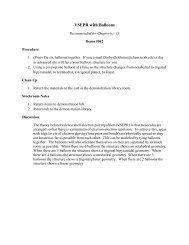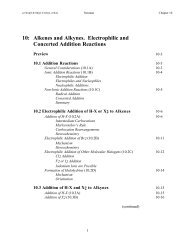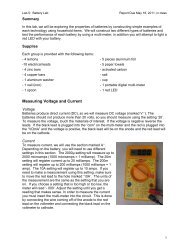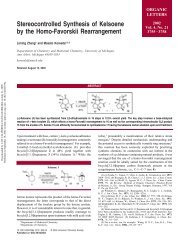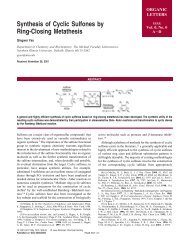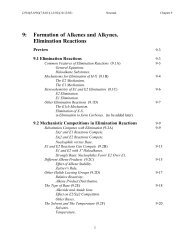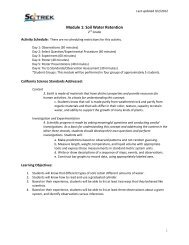14: Substituent Effects
14: Substituent Effects
14: Substituent Effects
Create successful ePaper yourself
Turn your PDF publications into a flip-book with our unique Google optimized e-Paper software.
(9/94)(11,12/96)(11,12/04,01/05) Neuman Chapter <strong>14</strong><br />
Table <strong>14</strong>.05. Effect of Cl Substitution on Acidity of Acetic Acid.<br />
Acid pKa Ka Ka(Cl)/Ka(H)<br />
CH3CO2H 4.8 1.7 x 10 -5 1<br />
ClCH2CO2H 2.9 1.4 x 10 -3 80<br />
Cl2CHCO2H 1.3 5.1 x 10 -2 3,000<br />
CCl3CO2H 0.7 2.2 x 10 -1 12,940<br />
Inductive <strong>Effects</strong> are General. The inductive effects that we have just described are<br />
generally observed for substituents in all types of chemical systems. The +I or -I<br />
characteristics of each substituent that we described in Table <strong>14</strong>.03 generally remain the same<br />
for any system. For example, the NO2 group or the F atom each withdraw electron density<br />
(-I) from any carbon atom to which they are attached while alkyl groups usually act as if they<br />
are electron donating (+I).<br />
How that electron withdrawal or donation affects a chemical reaction or chemical property of<br />
a molecule depends on the particular reaction or property that is being examined. The<br />
predictability of the inductive effect of a substituent as +I or -I provides a powerful tool to<br />
an organic chemist. It permits us to control chemical reactivity or molecular properties of a<br />
system by using the appropriate substituent.<br />
Similarly, both distance attenuation and the additivity of substituent effects are general.<br />
Inductive effects generally diminish in intensity as the distance between the substituent and<br />
the reaction site increases, while their effect is directly proportional to the number of<br />
substituents on the molecule.<br />
<strong>14</strong>.3 SN1 Reactions<br />
SN1 solvolysis reactions are also sensitive to substituent effects.<br />
Origin of the <strong>Substituent</strong> Effect (<strong>14</strong>.3A)<br />
We learned in Chapter 7 that SN1 solvolysis of a substrate (S-R-Y) has a two-step<br />
mechanism (Figure <strong>14</strong>.17).<br />
Figure <strong>14</strong>.17<br />
12


